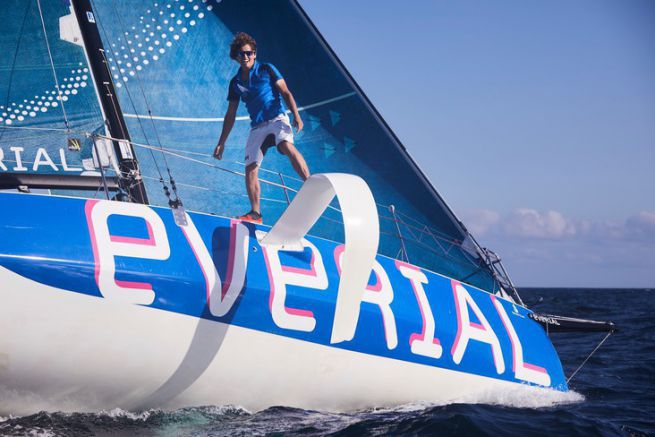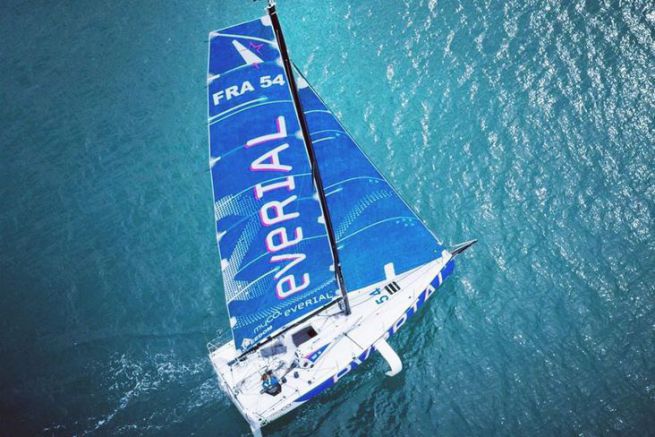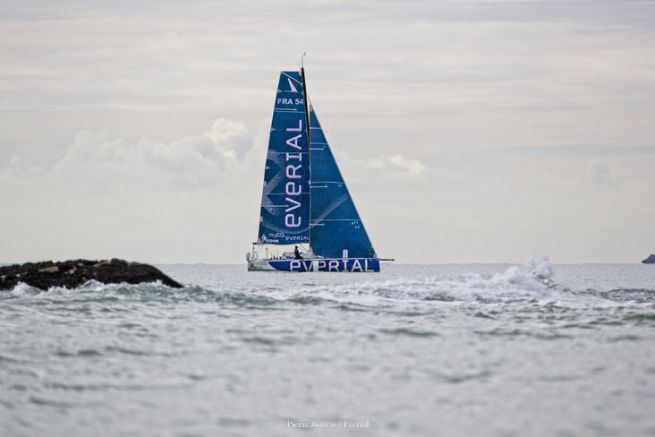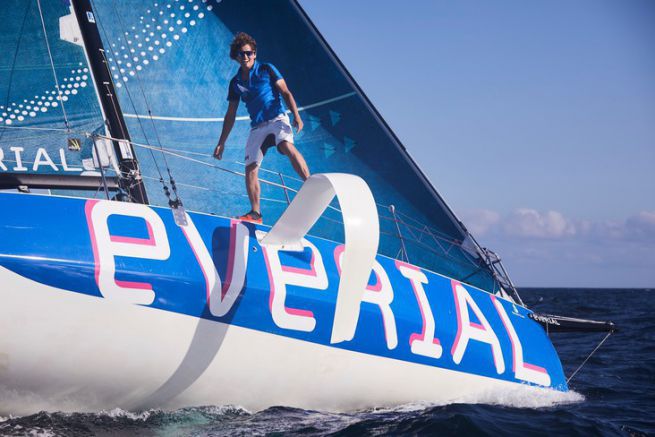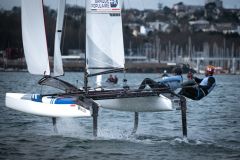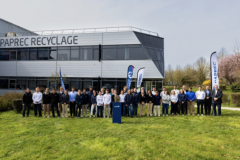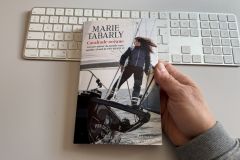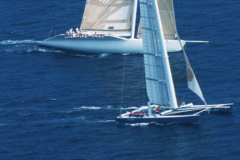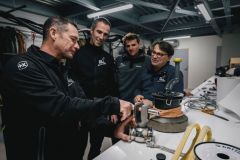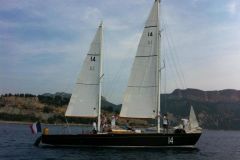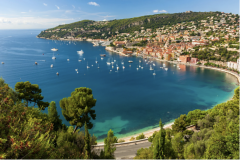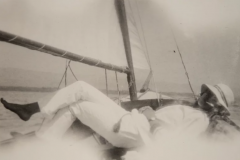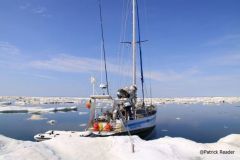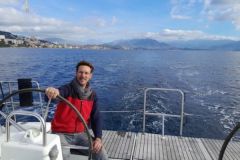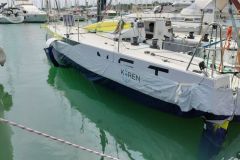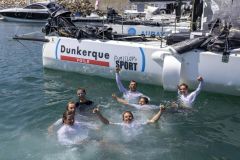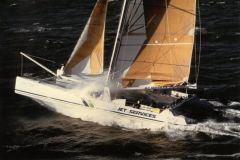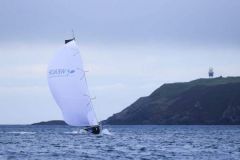Make a tactical choice to cross the Iroise Sea
The night had ended with the hoisting of the big pink spinnaker. After a sunny morning navigation, driven by a moderate wind, we arrive at the level of the Four Channel.
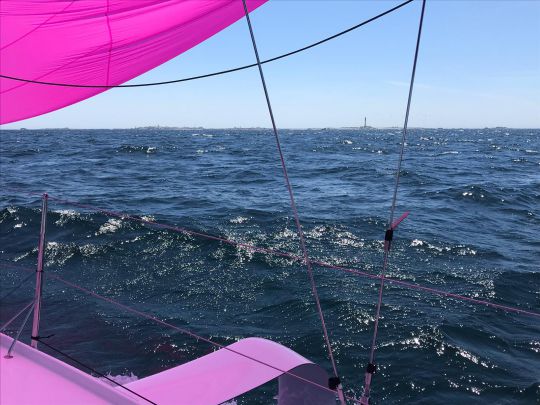
The strong currents that cross the Iroise Sea make navigation relatively complex. To better control the raz and their passages, we suggest you read this article.
Here, in the Iroise Sea, 3 passages are particularly well known. The oven channel which is the "coastal road" to the north of the area. The breast raz which is the passage to the south. We also know the reputation of the Fromveur, which generates some of the strongest currents in Europe, in the order of 12 knots at mid-tide of lively eaux?! It is therefore important to navigate with caution.
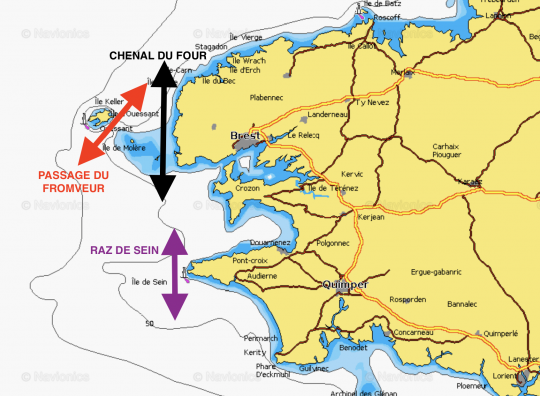
The tactical choice, or the art of dealing with a dilemma
So we approach the furnace lighthouse shortly before the current reverses, which will soon block our progress. A dilemma then arises for us.
Indeed, the Four Channel which runs alongside Portsall, the Aber Ildut, the Conquet up to the tip of Saint-Mathieu is undoubtedly the shortest way to reach the Sein ravine. The distance to travel is 34 minutes.
However, the NNE wind may force us to gybe many times in this narrow channel. And it is not excluded that the wind may be less strong at the coast. In addition, the current that will reverse will quickly slow us down.
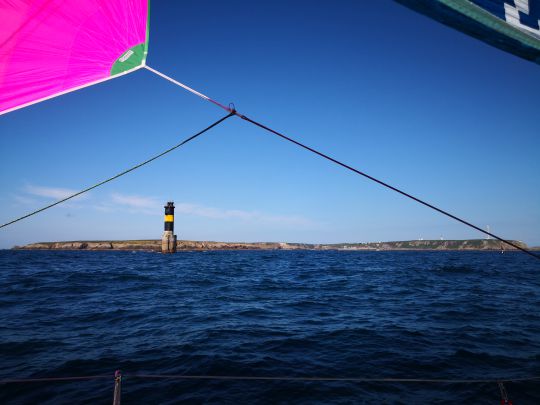
Do we have a choice of another option??
Can we be malin?? What will our camarades? do? We look towards the famous passage of the Fromveur. The road is longer, 42 minutes, approximately 20% longer... You would have to be very fast for this option to be a winner.
But in favour of this choice, we note that the reversal is much later, of the order of an hour. Indeed, it should be known that in Northern Iroise the reversal is done first at the coast and then offshore (see illustration below). That is, we will enjoy the treadmill for longer than our classmates.
By playing tight, we can probably get through with the current still favourable.
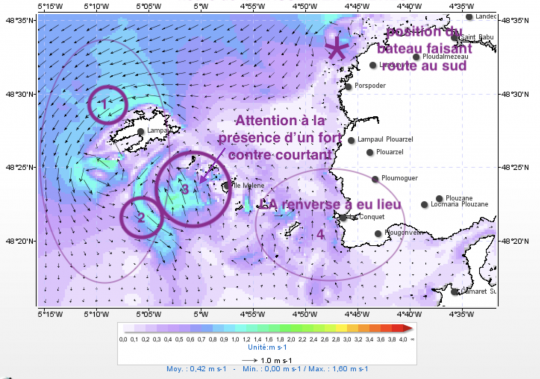
Low tide time in Brest, the reversal is first made at the coast.
1 The current is still very strong north of Ushant
2 The current is also very strong in the Fromveur and at its exit
3 Presence of a counter-current, mistrust, do not fall into it.
4 Low tide in Brest, it's the stall at the coast
MARC IFREMER Model "Modelling and Analysis for Coastal Research" provides access to advanced forecasts of currents and waves
You have to know how to choose your side
But an unknown data shakes our synapses, it's the wind. We do have the weather forecast: wind 15 knots from NE. But we lack precision to judge the coastal effects under the cliffs of the tip of Brittany.
Will the wind go around the point and blow gaiement?? What if he can't get past the cliffs and only blows at large?? All these questions torment us, but we are already at the bottom of Portsall and we have to choose sides.
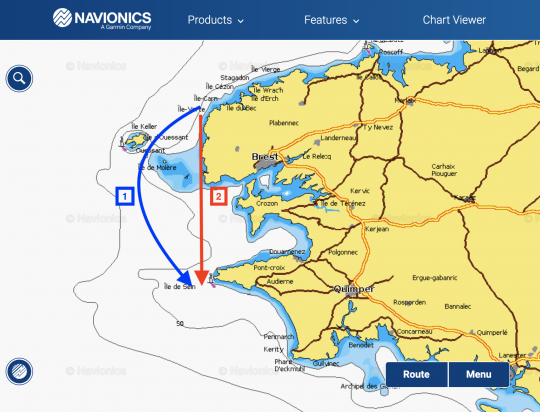
1 - Cross offshore: known wind, no more road (42mn), no more favourable current
2 - Take the conventional road passing through the oven: shortest route (34mn), unfavourable current, unknown wind
We can run simulations with our Adrena software, but we are missing a parameter.
These are the typical dilemmas faced by Figaro riders. You have to know how to take an option to the end and believe in it. It is always at the end that we find out if the choice was the right one. So for several hours, we sail with uncertainty mixed with hope.
We chose the passage of the Fromveur. It is a rather technical bottleneck at this time of the tide, because in this narrow strait, counter-currents can slow our progress. Again, a study of the bottom and current maps gives us valuable information on the best route to follow to negotiate the passage of the Fromveur.
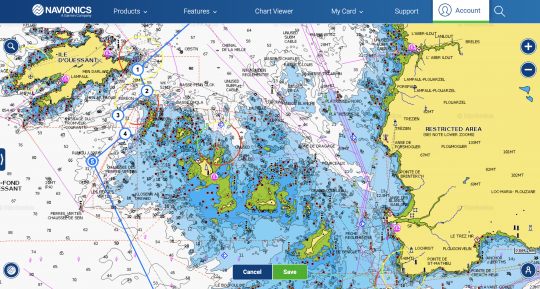
The wind will be the arbitral judge
The northeast wind is expected to be a little stronger off the Iroise Sea. But cumulus clouds are observed on land. It's twelve o'clock, is that a thermal wind that goes on route?? If that's the case, we're screwed, our option falls through.
Anyway, we'll make it work, we'll see the result at Breast Level. We get a huge foothold by sailing under spinnaker on a fast VMG in 20 knots of wind. The speed peaks are approaching 15 knots in the gusts. The Figaro 3 is a great boat, very aerial, it recalls the sensations of a Mini 6.50 (training video downwind) .
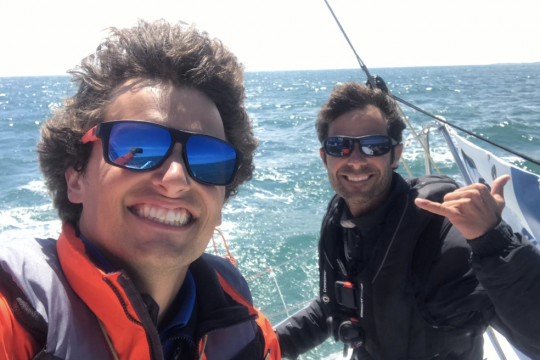
During our crossing of the Iroise Sea, the current gradually reversed. Now it is carrying north for a force of 2/3 knots.
In order to advance against the flow, we take shelter from it, in the north of the chaussée de Sein. This very efficient technique allows us to progress at a satisfactory speed.
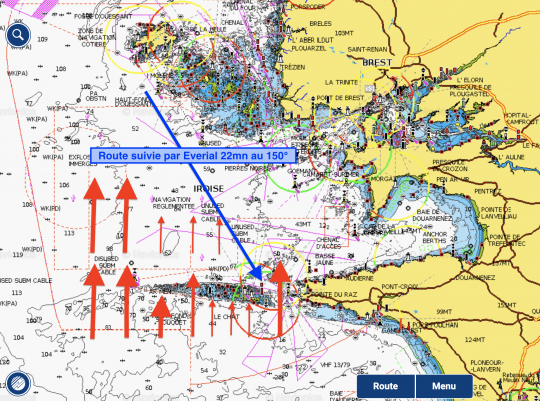
This option was the right one. We were the only ones of about ten boats to make the grand tour, but the others fell into the calm that had settled in the channel of the Four. And to progress, they had to make the motor counter-current.
Whether racing, ferrying or cruising, it's a pleasure to see that one option was the right one, it's almost a victoire?!
